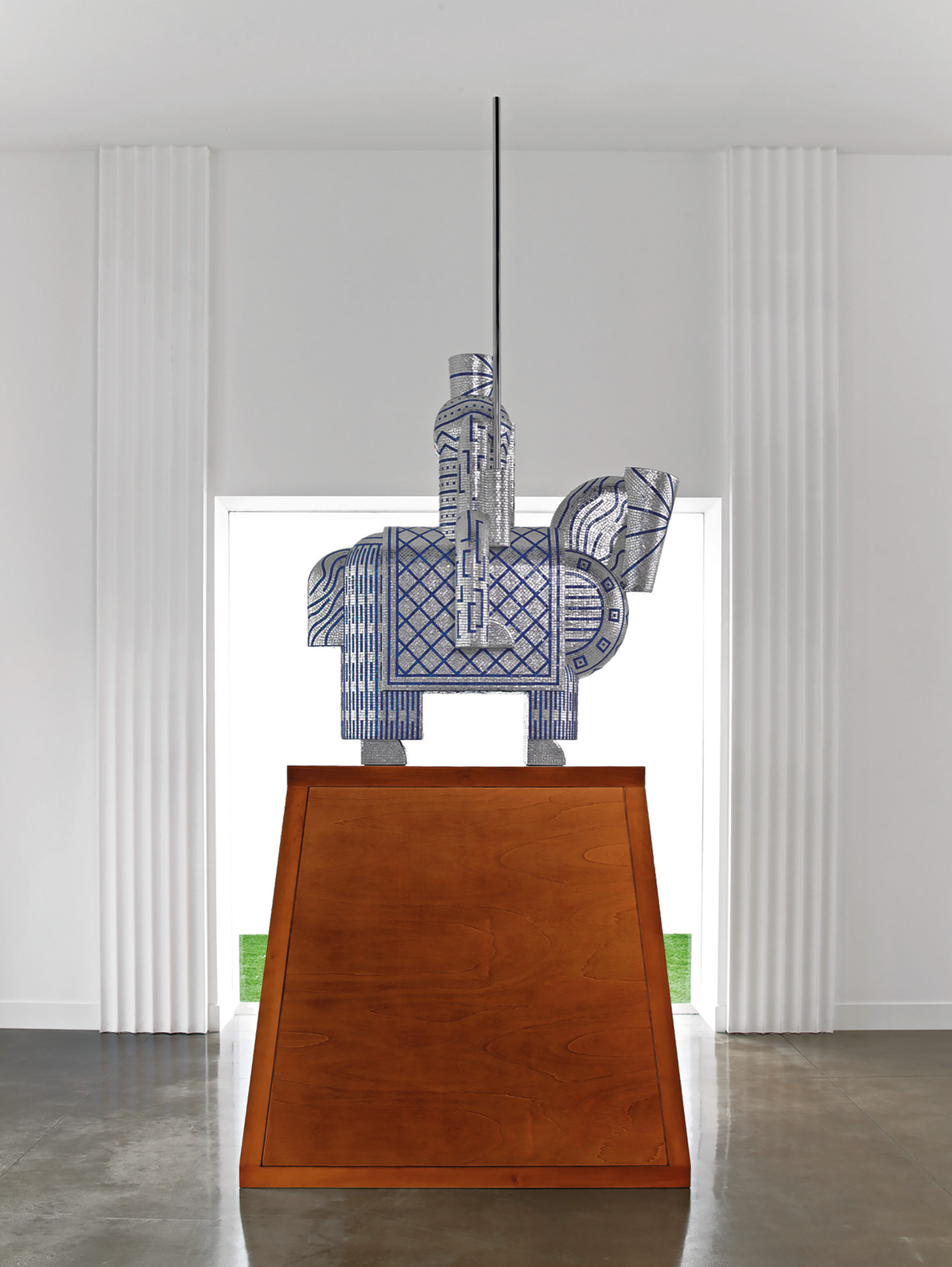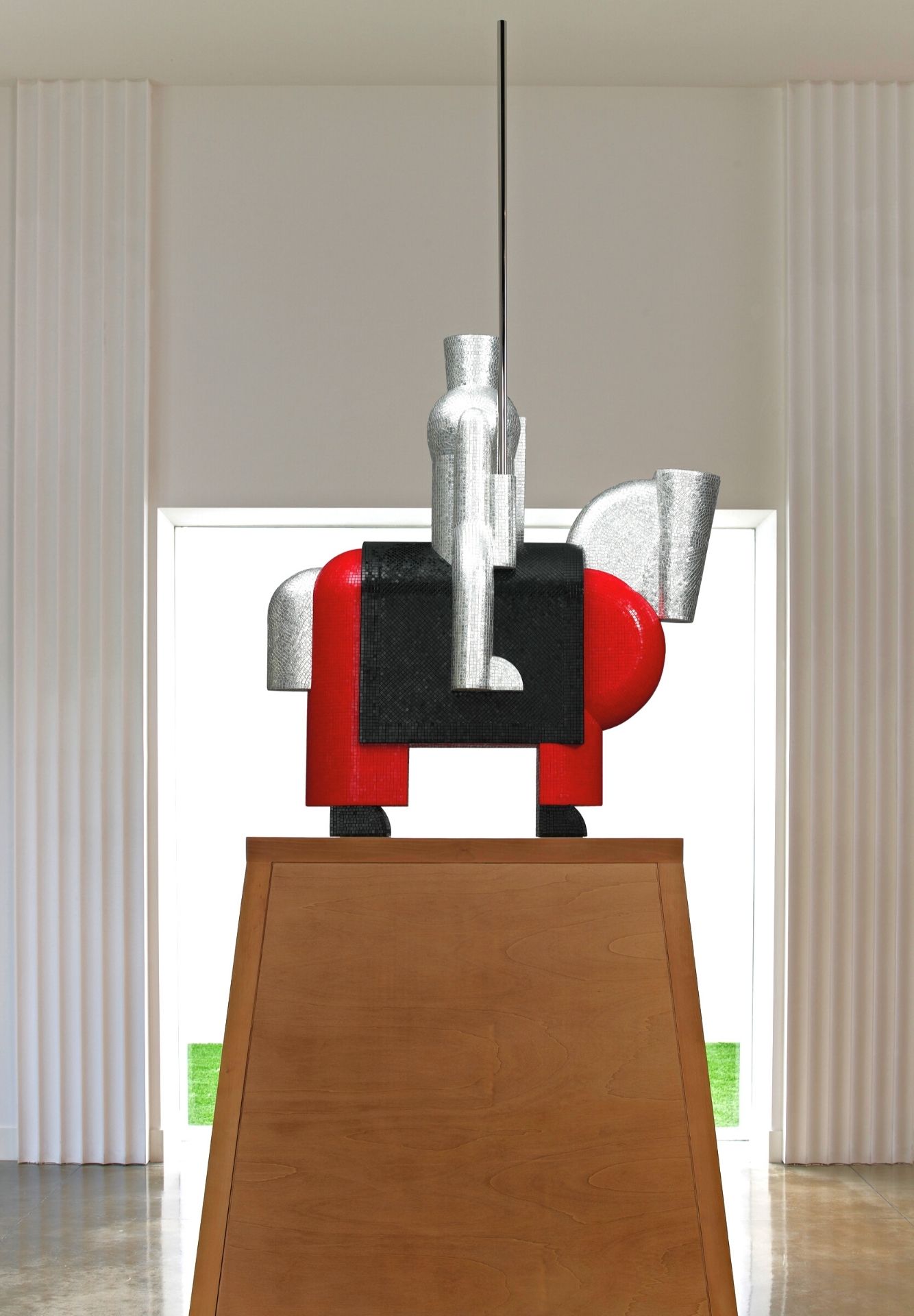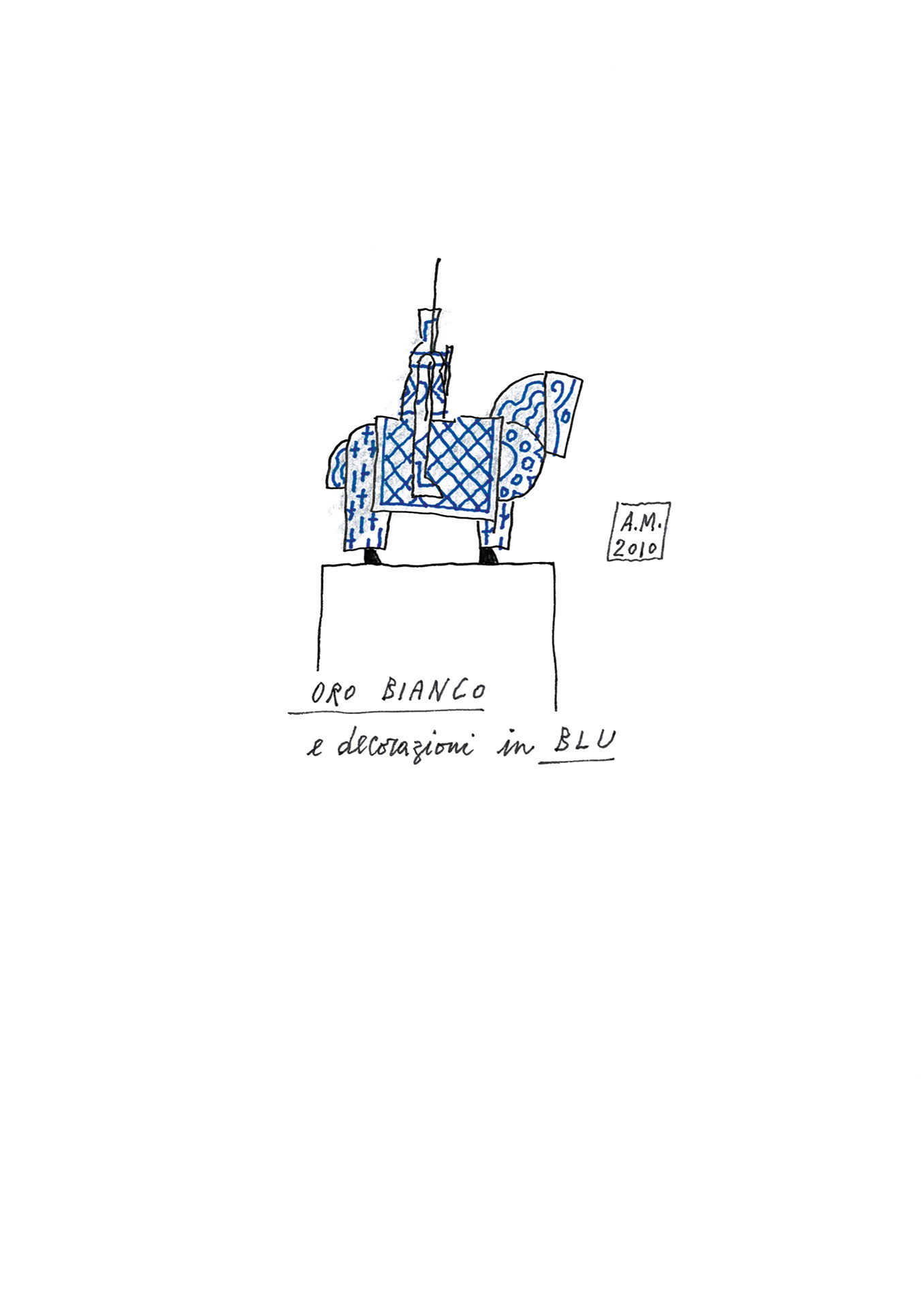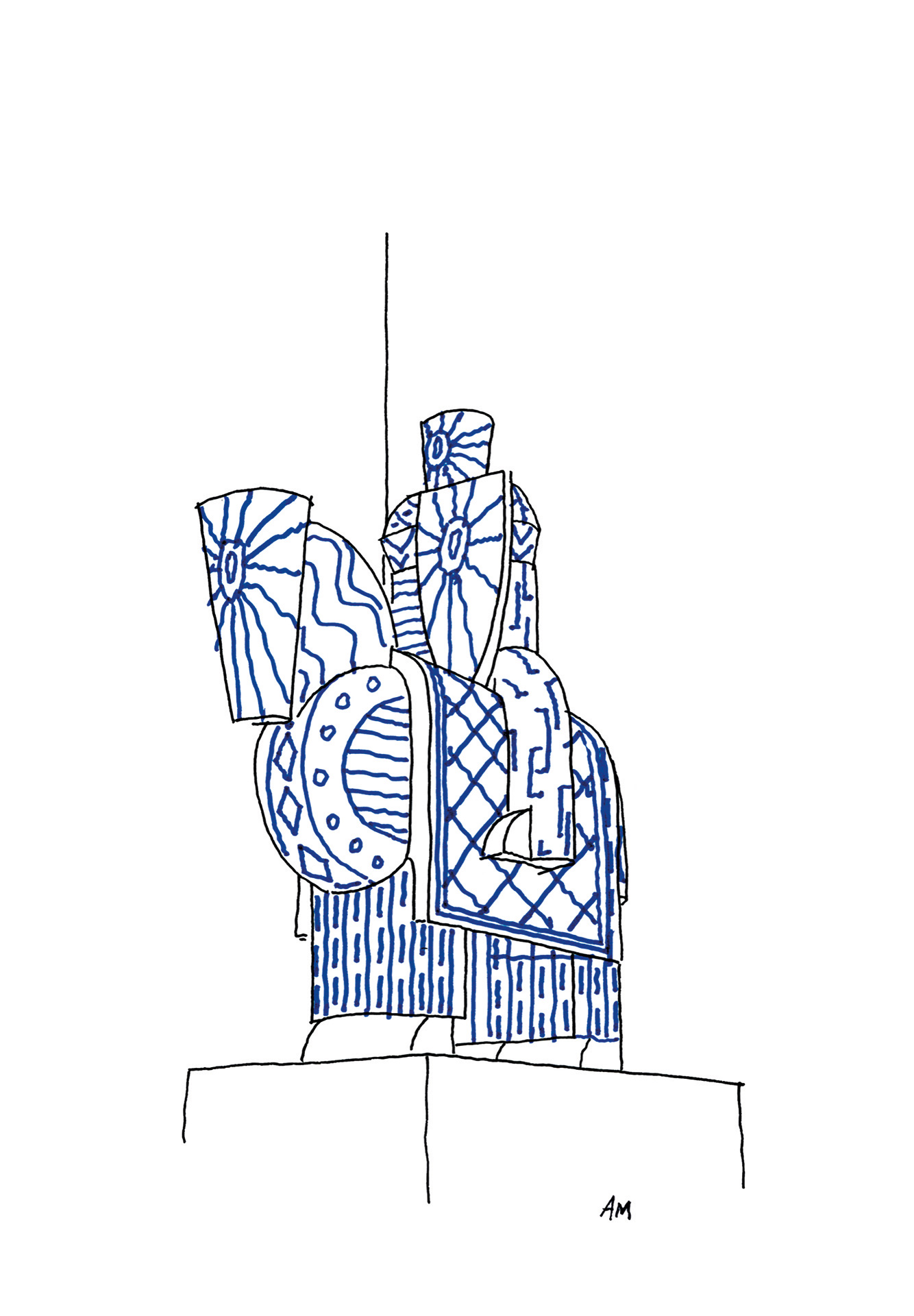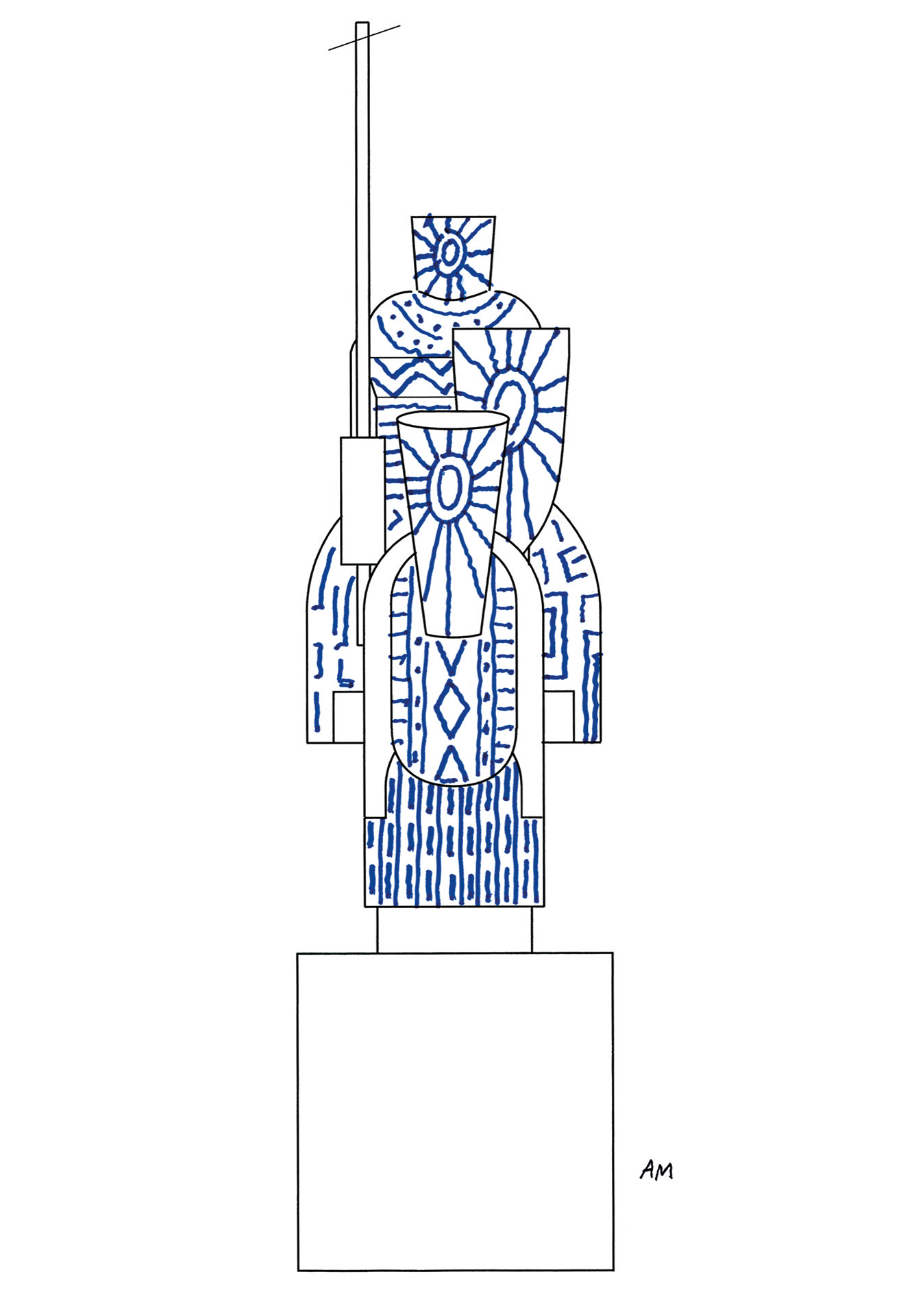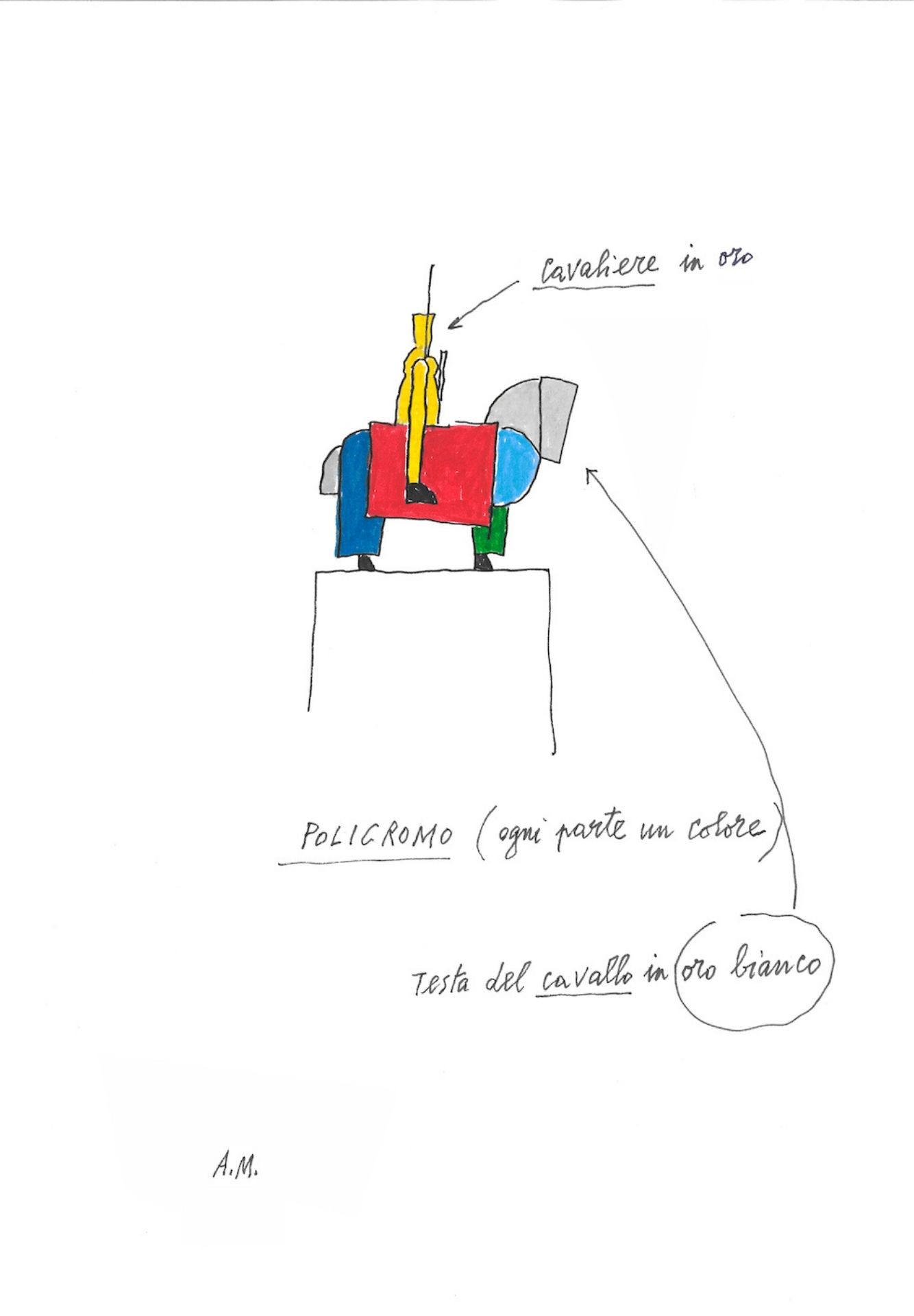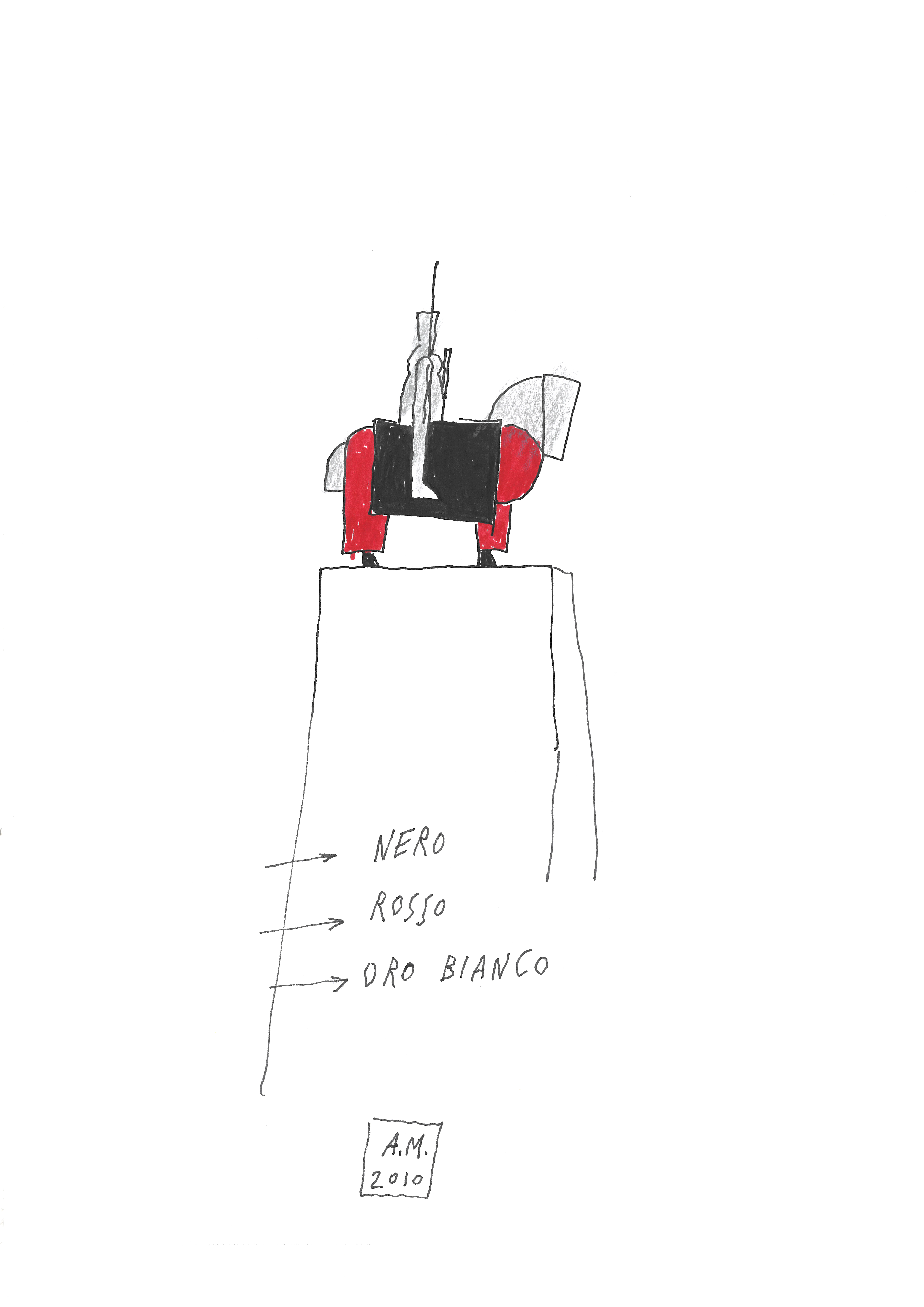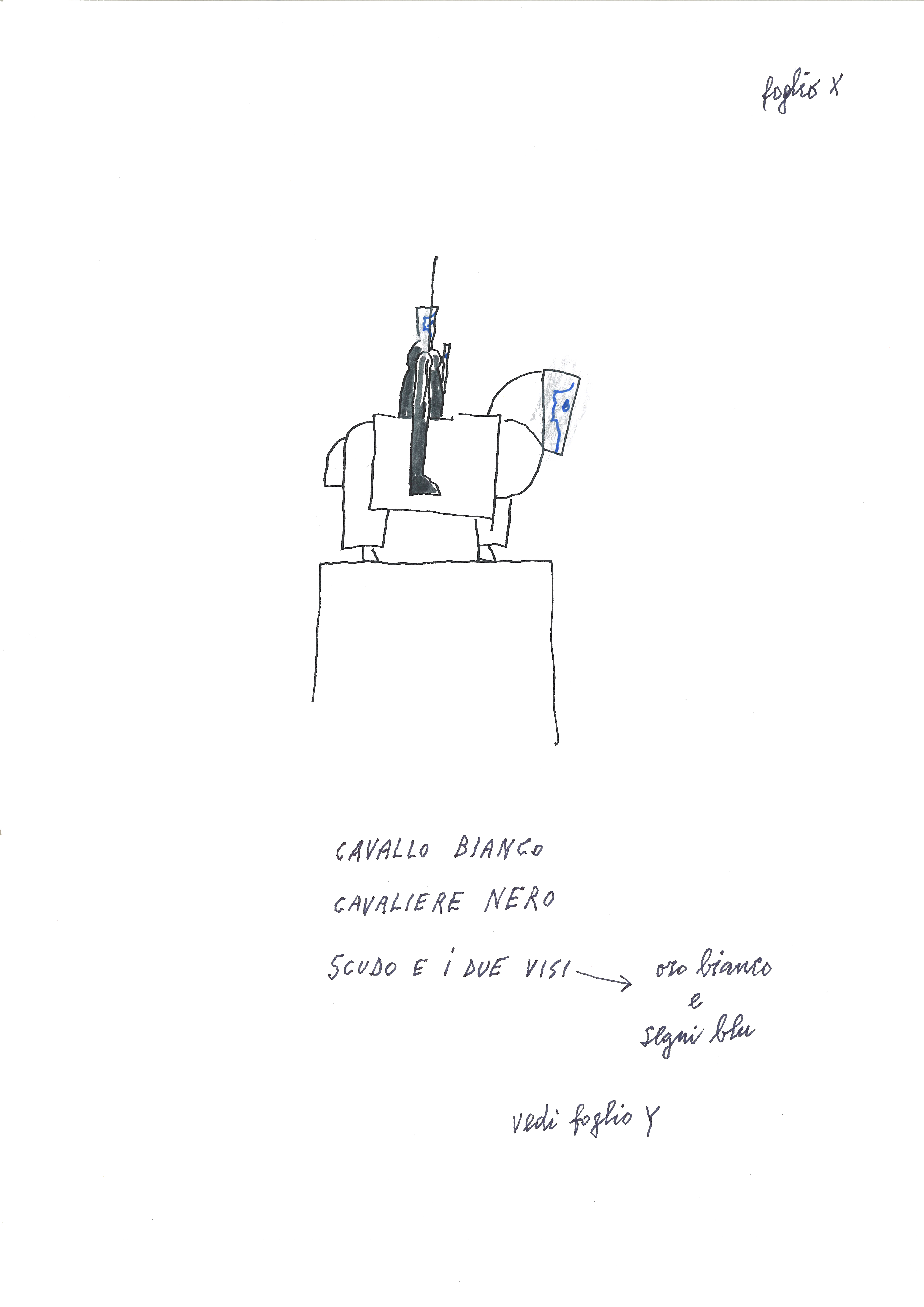Dürer’s Knight
Alessandro Mendini
The venerable history of equestrian statuary has a special charm that has always fascinated me. Trying out such a project on my own, I spontaneously thought of covering the statue in mosaic tiles, to make it sparkling, nervous, reflective.
Alessandro Mendini
I’ve always kept the enigmatic figure of Dürer’s Knight in my mind, along with his crustacean-like image of a Rhinoceros. These extremely refined and detailed etchings inspired me to transpose the image of a knight and horse into glass mosaic. The volumes of my equestrian statue are conceived as elementary masses, with the intention of creating compact fields of colour in which to organize the decorative geometry. The compositional structure is suggested by the enigma that Dürer expresses, wherein the horse and the knight merge into a single image. The scale of the statue is smaller than real life, though it is set on a pedestal that makes it seem further away through perspectival illusion, and somehow abstract.
The white gold of the tesserae covers the two figures with a sort of sparkling armour, while the delicacy of the blue lines recalls the masterful play of the burin in Dürer’s engraving. The venerable history of equestrian statuary has a special charm that has always fascinated me.
Trying out such a project on my own, I spontaneously thought of covering the statue in mosaic tiles, to make it sparkling, nervous, reflective.
I don’t think this has ever been done before. This shimmering skin applied to the fixity of the volumes makes me wonder if there couldn’t exist a series of knights, identical in form, but identified by their different armour: Bisazza Foundation knights, ready for a joust.
Alessandro Mendini


